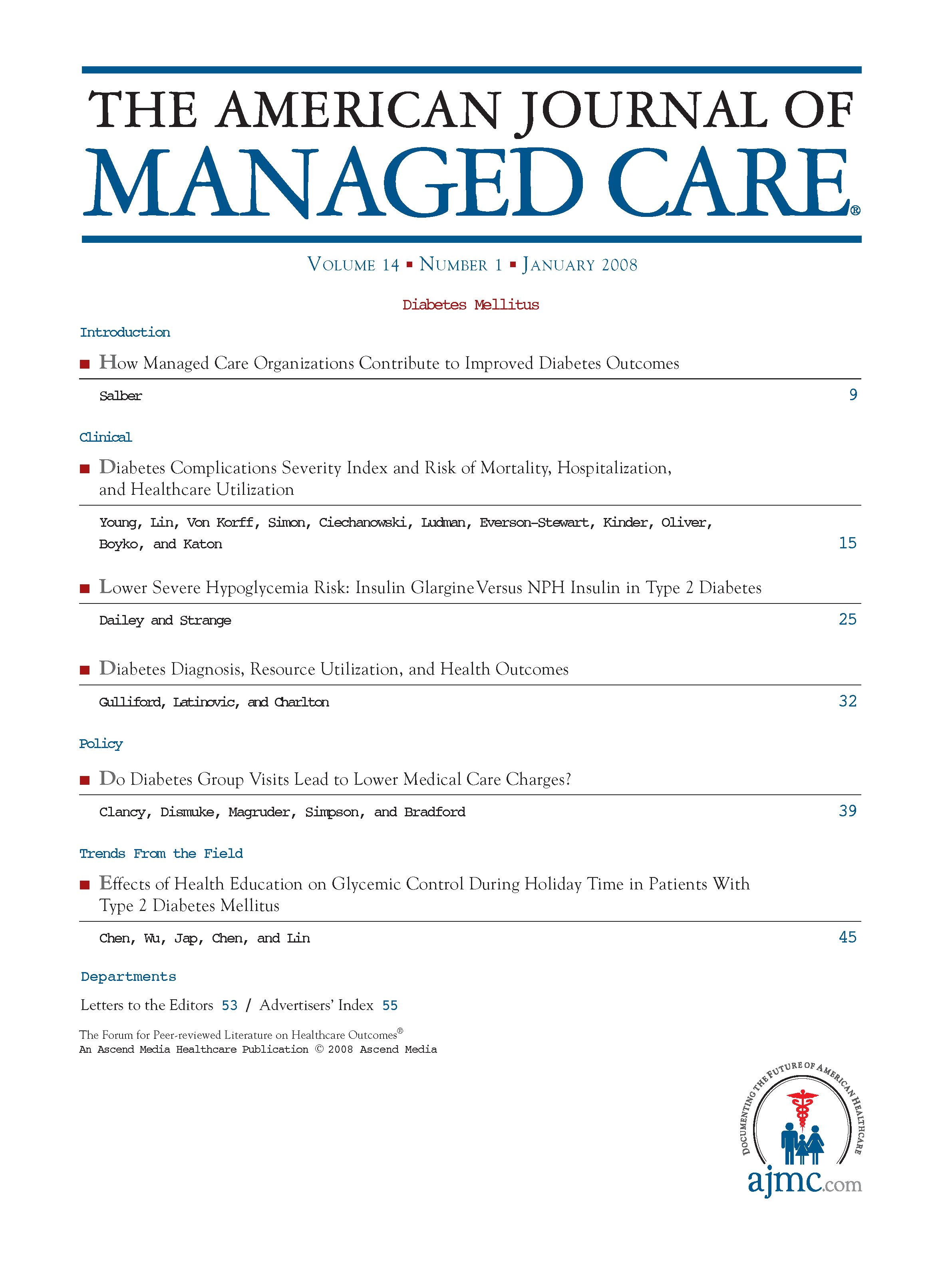- Center on Health Equity & Access
- Clinical
- Health Care Cost
- Health Care Delivery
- Insurance
- Policy
- Technology
- Value-Based Care
Unrecognized Confounders in Overcoming Clinical Inertia Study
Improving lipid control has tremendous public health implications, and I applaud the efforts aimed at provider education to overcome clinical inertia. The study by Goldberg et al1 reports that a low-cost educational intervention through staff meetings and electronic communications led to an intensification of therapy with simvastatin for patients with diabetes or coronary artery disease. The authors compare dose escalation rates during the preintervention period of January 1, 2003, until December 31, 2004, with a postintervention period of May 1, 2005, until July 31, 2005, and conclude that their low-cost intervention led to increased provider aggressiveness and more patients reaching their low-density lipoprotein cholesterol (LDL-C) target, which was an LDL-C of less than 100 mg/dL.
Events rarely transpire in a vacuum, and simultaneous occurrences could have served as important confounders that merit mention. Toward the end of their preintervention period in July 2004, a much heralded update by the National Cholesterol Education Program was published suggesting that, based on recent trials, healthcare professionals could consider LDL-C goals of less than 70 mg/dL in those at very high risk.2 It is quite possible that this widely cited document and mounting evidence of benefits of risk reduction for certain high-risk populations with reduced LDL-C targets were at least partially responsible for some of these investigators’ findings of increased provider aggressiveness. While the authors do report that at least 1 highrisk subgroup (those with both coronary artery disease and diabetes) was less likely to have its simvastatin dose increased, the authors do not report preintervention and postintervention LDL-C levels, nor do they report results for others who might be targeted for LDL-C levels of less than 70 mg/dL (cardiovascular disease and either poorly controlled risk factors or the metabolic syndrome, as well as those with acute coronary syndromes).
Provider education is essential to keep practicing physicians abreast with scientific advances. However, we must acknowledge that knowledge is acquired in a wide variety of ways. While the investigators’ initiative certainly might have been the major contributor to their findings, the possibility of outside confounders must be recognized.
Daniel G. Federman, MD
Yale University School of Medicine
VA Connecticut Health Care System
Address correspondence to: Daniel G. Federman, MD, VA Connecticut Health Care (11ACSL) System, 950 Campbell Ave, West Haven, CT 06516. E-mail: daniel.federman@va.gov.
IN REPLY:
Duke University and Durham VA Medical Center
Address correspondence to: Kenneth C. Goldberg, MD, Division of Ambulatory Care, Box 11C, Durham VA Medical Center, 508 Fulton St, Durham, NC 27705. E-mail: kenneth.goldberg@duke.edu.
2. Grundy SM, Cleeman JI, Merz NB, et al. Implications of recent clinical trials for the National Cholesterol Education Program Adult Treatment Panel III guidelines. Circulation. 2004;110:227-239.

Trends in Hospital Pricing for Vulnerable Emergency Department Users, 2021-2023
December 4th 2025Self-pay emergency department prices rose significantly from 2021 to 2023, especially at for-profit and system-affiliated hospitals, highlighting growing affordability challenges for uninsured and underinsured patients.
Read More
Integrated Care for Chronic Conditions: A Randomized Care Management Trial
December 3rd 2025The authors sought to understand the differential impact of payer-led community-based care management approaches on stakeholder-oriented outcomes for publicly insured adults with multiple chronic conditions.
Read More

